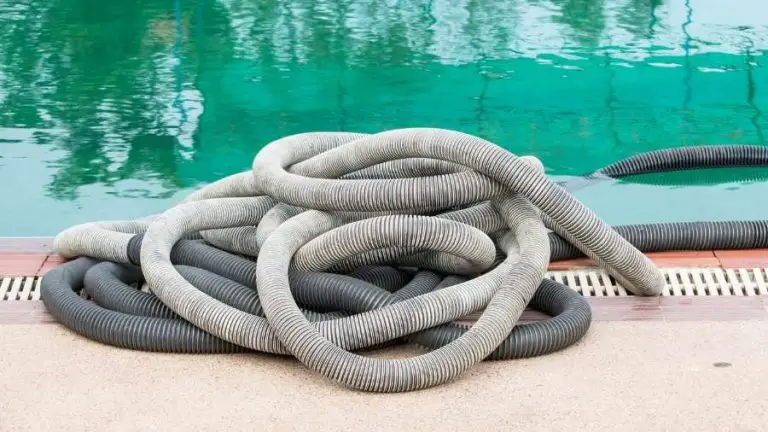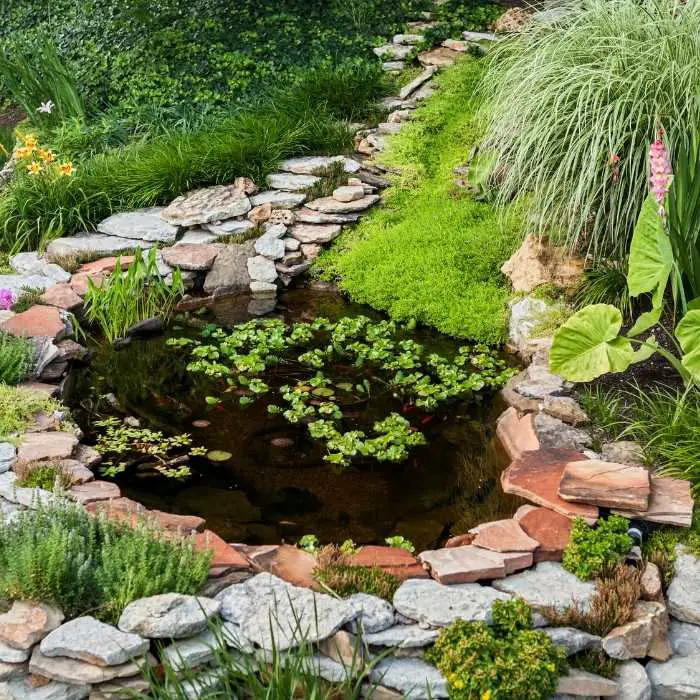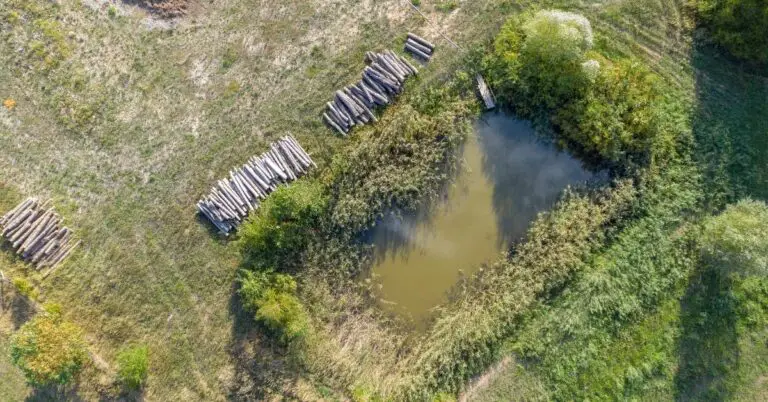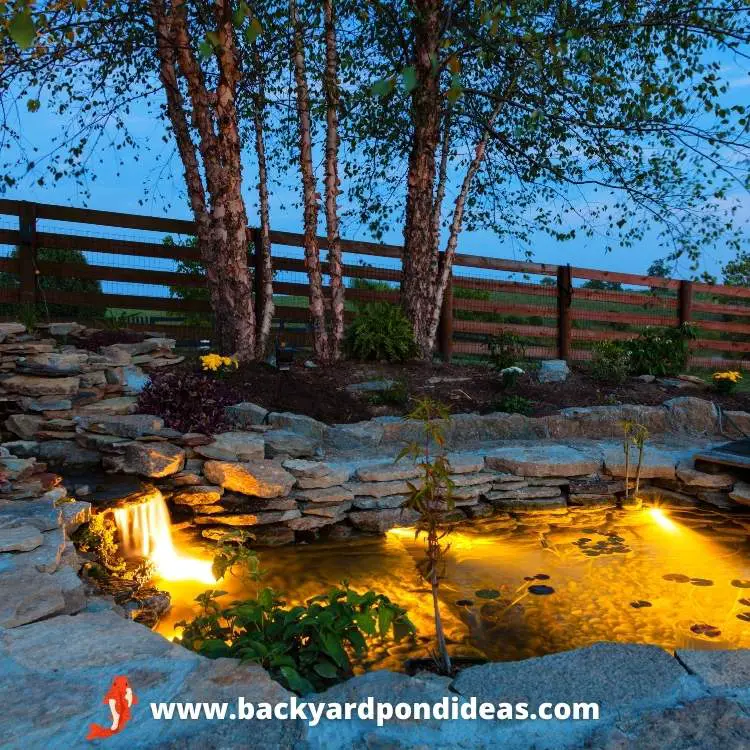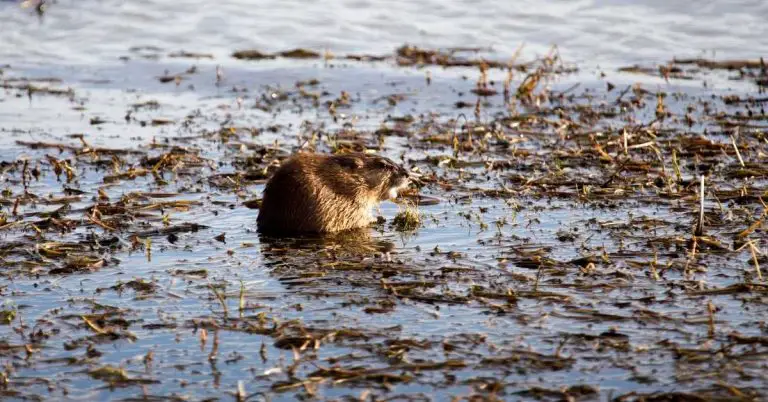Can You Swim In A Backyard Pond?
Your garden pond might look like a nice place to take a dip on a hot summer’s day, but is it safe to swim in a backyard pond?
Yes, you can swim in a backyard pond as long as the pond is big enough and the water is clean. A pond needs to be free of harmful bacteria and large enough to support a swimmer without destroying its ecosystem. If your pond fits this criteria, you should be able to swim in it.
But that doesn’t mean you can jump jump in any pond that looks clean. There are important things to know about harmful bacteria that can potentially make you or your loved ones sick if swallowed. You also might want to consider building a backyard pond for the purpose of swimming.
Check The Quality Of Your Pond’s Water Before Swimming In It
The main thing to consider before jumping in your backyard pond for a swim is the safety of the water. The levels of harmful bacteria present in the pond is what determines if the water is safe to swim in or not.
The first thing you can do to determine this is a quick visual inspection of the pond’s water. Is it scummy and brown or foul smelling? Does it have an oily sheen or are there dead fish and insects floating on the surface? If you answered yes to any of these questions, your pond is most likely not safe for swimming without cleaning it up first.
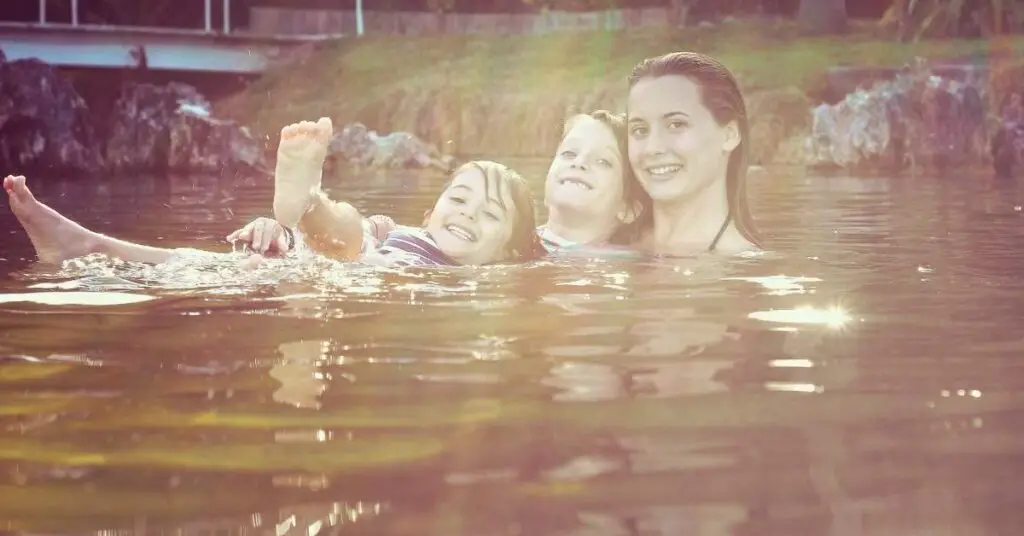
Test Your Pond’s Water Regularly
If your pond passes the visual test, that’s a good sign, but it’s still not a guarantee that it’s safe for swimming. For this, you’ll need to test the water for bacteria.
The most common bacteria you’ll want to test for is E. coli. E. coli is harmful by itself and is often indicative of other harmful bacteria in the water as well since it comes from human and animal waste (as in poop). These kinds of bacteria can lead to diarrhea, vomiting and even worse illnesses, so don’t fool around with them.
Many counties across the US offer free or low-cost pond water testing kits that will test for all these things as well as pH levels and the presence of heavy metals. Check with your local government first to see what they offer, however most of these tests, along with more comprehensive ones, are available online as well.
Keep The Pond’s Water Filtered And Moving
One of the easiest ways to make sure your pond’s water stays clean and clear enough for swimming all year long is by installing a filtering system.
A filtering system will help to filter out bits of debris and gunk that will otherwise sink to the bottom of your pond and create a breading ground and food source for unwanted bacteria.
It’s also important to make use of pumps and other water features such as waterfalls and streams to keep the water moving in your pond. Stagnant water is much more likely to become a home for harmful insects and bacteria than water that is constantly moving and being filtered.
Check Where The Pond’s Water Comes From Before Swimming In It
Another thing to consider with a swimming pond is where your water comes from.
If the water in your swimming pond comes from the tap, it’s probably fine. But if it’s coming in off of a stream or other body of water, some more investigation is necessary as it may have unhealthy levels of bacteria.
Basically, you want to look at what the water flows over before it ends up in your pond. If it’s going anywhere near a farm, livestock area or feedlot, you want to be extra careful. This is exactly the kind of scenario where high levels of bacteria can breed out of control and wind up making a home out of your pond and your family members sick.
So if you’re at all concerned about the source of your pond’s water, take all precautions and filter it while testing it regularly for quality. You may even want to consider cutting off that natural water source and replacing it with an artificial one that you control.
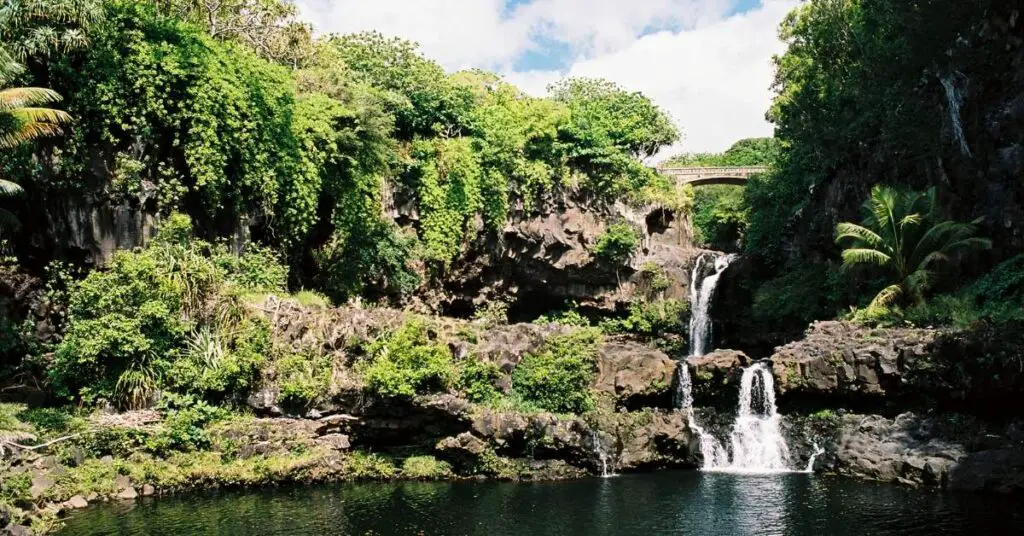
Don’t Swim In A Pond That’s Too Small
Your pond’s water might be perfectly safe to swim in, but if it’s too small you should avoid it anyways.
Splashing around in a small backyard pond can do a lot to damage its natural ecosystem. For example, you can very easily trample or destroy the many plants present in the pond that work hard to filter and keep the water clean. And if there are fish in the pond, you can step on them, disrupt their food source, or even introduce chemicals and bacteria from your clothes or skin that are harmful to them.
All of this is especially true if we’re talking about a small backyard pond you built yourself. These kinds of ponds are usually carefully crafted to preserve the delicate balance between plants, fish and bacteria. Humans should not be swimming in such a pond if you want to maintain its ecosystem.
But don’t despair, just make sure the pond is big enough and it will be fine for swimming. The ideal size for a backyard swimming pond is at least 25-30 feet and 6 feet deep. A pond this size will suit most individuals and families just fine while giving enough space for the surrounding plants, fish and fauna to survive and thrive.
Build Your Own Backyard Swimming Pond
If you backyard pond isn’t quite appropriate for swimming, why not build one that’s designed for it?
When planning your backyard swimming pond, keep a few important things in mind:
- Make sure the pond is big enough – 25-30ft is usually good.
- Make sure there is a comprehensive filtering system to keep the water clean and clear.
- Test the water quality regularly, especially at the beginning and end of each season.
- Consider adding docks or steps so you can get in and out of the pond safely.
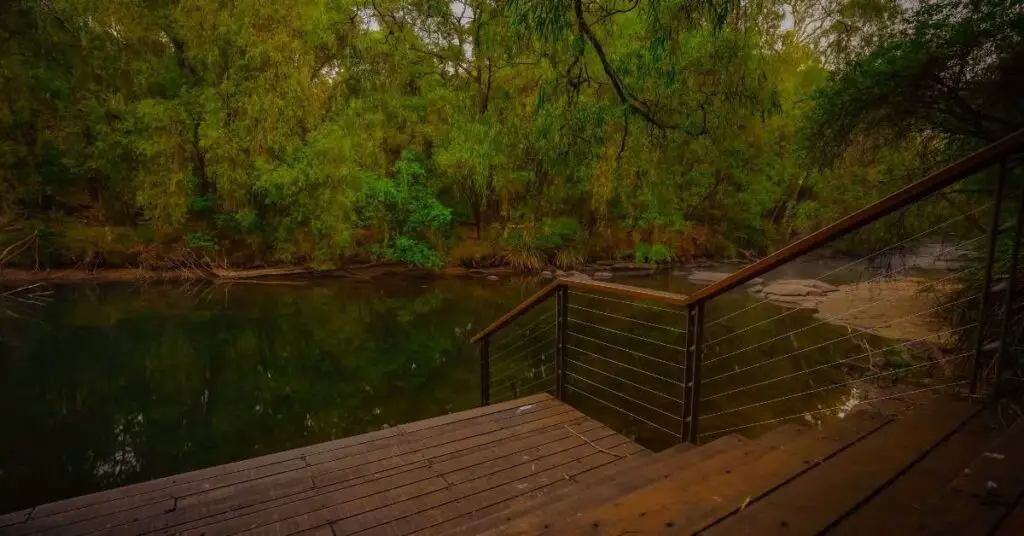
How To Build A Backyard Swimming Pond
There are lots of ways to build a swimming pond, just as there are lots of ways to build any kind of pond. These are the general set of steps you’ll be following once you’ve planned out the details.
- A swimming pond needs to be deep enough, so start with a 6 foot deep, 25-30ft hole and add a sand base, so the final depth is about 5.5 feet.
- Remove sharp rocks that can puncture the liner and backfill it with compaction sand.
- Add a pond liner to the bottom of the hole and cover it with large and small stones to protect it and give it a natural look and feel.
- Plan where you want to place your deck, dock, plants, deep areas and water features. Make sure you place them in areas so that people can safely enter and exit the pond without falling onto large or sharp rocks.
- Install a filtering system so that clean, fresh water is constantly replenishing stagnant or dirty water in the pond.
- Edge treatment – lay sod and go around the pond trimming excess liner and bury the rest of it with rock and mulch to make it look natural.
- Make sure to cover or bury any sharp edges near or around the edge of the pond to protect bare feet.
As you can see, building a swimming pond isn’t much different than building a regular pond, it just has an added emphasis on size and proper filtration.
Filtration can take many forms, from a purely mechanical system that physically pumps water through an artificial filter to a completely natural one. A natural filtration system often involves running water through a shallow area full of plants and gravel that absorbs any unwanted materials.
Final Thoughts
A pond can easily become the focal point of your property, especially when its safe for swimming.
The main thing to look out for in a swimming pond is the quality of the water. If you smell something foul or see anything dead floating on the water’s surface, it’s probably not safe for swimming. However, a pond with water that’s been thoroughly tested and kept clean throughout the year can be safely used for swimming.
Test your backyard swimming pond regularly to make sure there aren’t harmful levels of e. coli and other unwanted bacteria. This way you can avoid getting sick or even worse in some extreme cases.
Algae, on the other hand, is usually safe to swim near even if it’s a little gross.
Do you swim in your backyard pond? What’s your experience been like? Let me know in the comments below.


